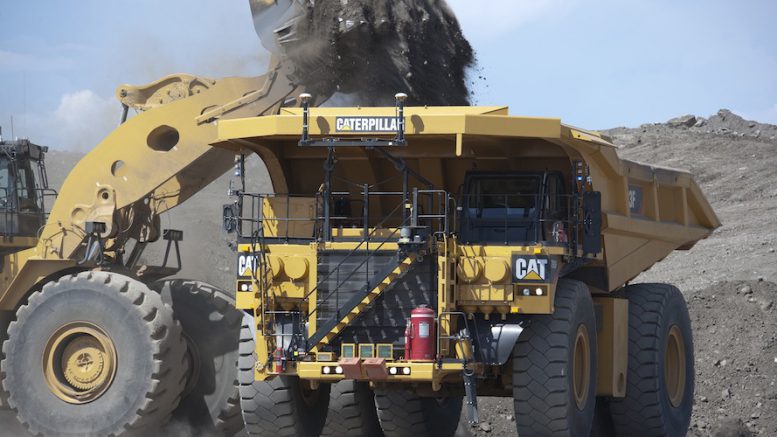Inflation and geopolitics have overtaken ESG as the biggest concerns for 2023, while energy costs, shifting supply chains, and climate-related regulation and activism still worry firms.
Despite shared concerns, there is surprisingly little agreement on the economic outlook, how market players will respond, or what will be the pervasive theme for the year ahead.
These are chief among the conclusions of the seventh annual survey of industry participants by legal services firm White & Case. The report, released Thursday, draws on the reflections of 156 senior decision-makers.
Among the key insights from the report, 18% of respondents cited inflationary cost pressures as the largest risk (up from 4% in 2022), followed by geopolitics (16%). This is a marked change from 2022, where ESG dominated the perceived risks – 24% compared to 11% in 2023 – as other pressures have grown in importance.
Since the invasion of Ukraine in February 2022 and the imposition of zero-Covid measures in China, the markets faced a perfect storm of competing pressures which is unlikely to subside entirely in 2023.
Survey respondents expect costs to remain higher for longer despite signs of relief, with high energy costs coming in fourth for respondents among the most significant risks for 2023. Trade tensions will also likely increase inflationary pressures for end-users, feeding into operating expenses and markets more generally.

Amid uncertainty in the industry, the December quarter saw a decade-high number of mergers and acquisitions, nearly matching the total volume of deals for the preceding three-quarters of last year, according to the report.
Mining companies continue to make acquisitions and investments, knowing that whatever turbulence they face today, the material demands of the energy transition and the risk of supply deficits are stark.
According to the report author, White & Case partner Rebecca Campbell, who leads the firm’s Global Mining & Metals Industry Group, striking in the survey responses is the link of areas perceived in high demand to the EV supply chain. Copper and lithium ranked materially higher as the likely big winners in 2023, with battery minerals and base metals as probable areas for consolidation.
“It seems that everything EV-linked is perceived to be where the opportunities are for 2023,” wrote Campbell.
When it comes to the development of energy transition metals, end-users are expected to play a far bigger role in financing the development of energy transition minerals in 2023, with 41% of respondents citing end users as the stakeholder most likely to invest in them, increasing by a third from 2022.
Climate change also remains high among industry priorities. The climate change response will continue to be an issue for mining companies, as will supply chain management – both factors continue to dominate as the main priorities for the second year running – cited by 28% and 21% of respondents, respectively.
M&A landscape
The White & Case survey suggests mining majors enter 2023 in a much stronger position than in previous downturns. Respondents were divided over whether majors will increase their M&A activity.
Campbell points out that 2014 instilled discipline among mining majors, punishing those who’d overleveraged and neglected cost-cutting.
“The largest mining companies have since shied away from developing their own projects, instead allowing junior miners to do so until they’re ripe for M&A activity. That approach comes with considerable risks, particularly as junior miners have good reason to consolidate among themselves, seek out joint ventures with downstream consumers, or otherwise explore alternative financing arrangements to pursue growth more aggressively than majors do,” says Campbell.
Since few projects are developed by majors and firms have generally struggled to finance via capital markets in 2022, junior miners, end-users and traders have turned to joint ventures, direct financing, and long-term offtake agreements to secure supply. Junior miners may be better placed for growth despite financial conditions if majors don’t shell out.
“Our respondents expect that end-users, governments, export credit agencies and development finance institutions will lead the way, financing critical minerals projects for these reasons, with conflicting views on whether majors are willing to spend,” Campbell said.
The report also flags several other noteworthy perspectives, including that increased taxation is expected to be the most likely manifestation of resource nationalism in 2023. The survey found 68% of respondents expect resource nationalism to increase in 2023. According to Campbell, respondents offered diverging views about the themes that will dominate 2023. Some cited high prices and good supply/demand fundamentals; others cited policy support from local governments, inflation and cost pressures, or a deepened focus on climate resilience. None confidently predicted growth or recession.
Deal types, the structure of financing and risks for mining are all rapidly evolving without a clear picture of what’s to come. Shifts in U.S. trade policy against the WTO, the passage of the Inflation Reduction Act, and the EU’s recently agreed carbon border adjustment mechanism (CBAM) create new risks of disputes and commercial litigation for metals firms and opportunities to invest.
Campbell says that the growing overlap between ESG concerns and structural market trends is driving relatively novel approaches to vertical integration and the shortening of supply chains. She adds that these changes will likely push more firms to look at carbon credits and trading schemes or seek to minimize risks from their assets of future trade disputes, where possible, while preparing for them in the event they arise.
“2023 is likely to surprise us as much as 2022 did,” Campbell concludes.


Be the first to comment on "2023 is ‘likely to surprise’ us as much as 2022 did, finds White & Case survey"